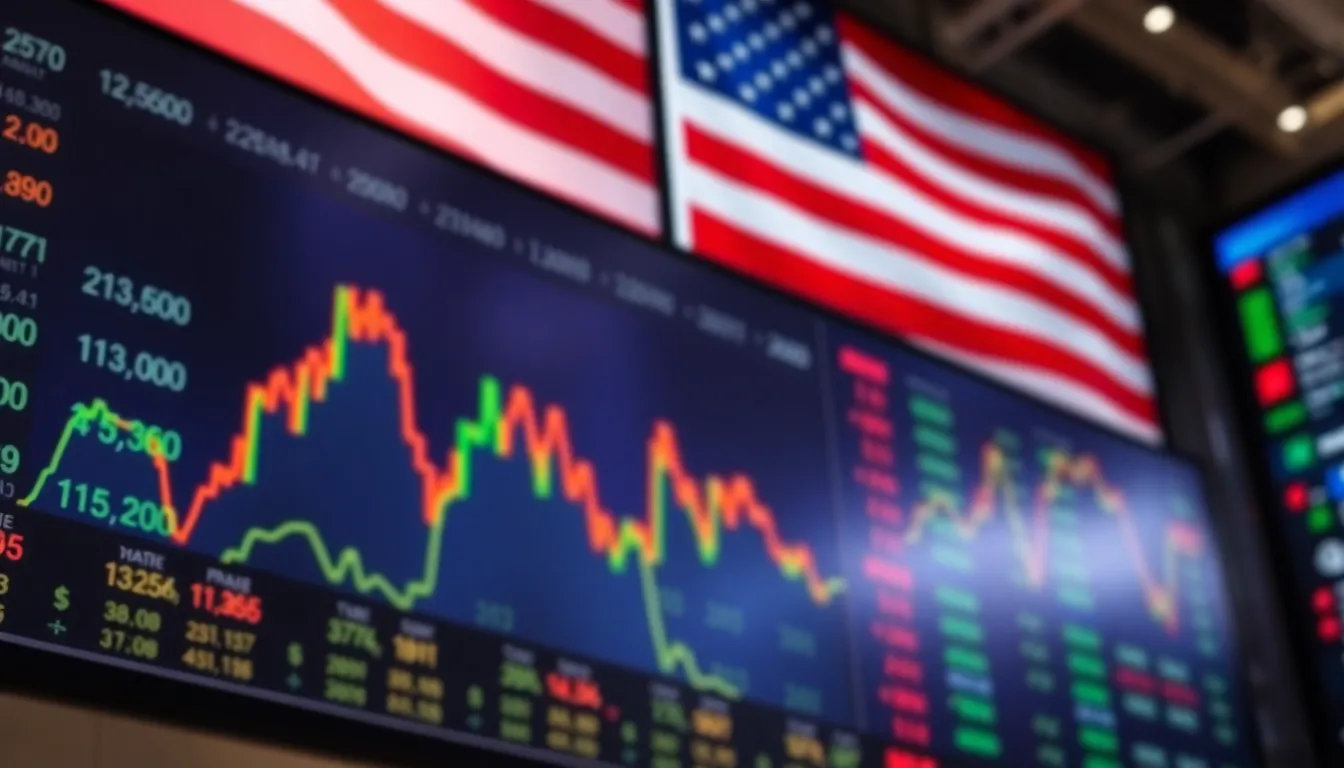When companies announce a buyback, it’s like a surprise party for shareholders—except instead of cake, they’re serving up cash. This strategic move not only signals confidence in the company’s future but also gives investors a reason to cheer. Imagine a business saying, “We believe in ourselves so much, we want to buy back our own stock!” It’s the corporate equivalent of flexing in the mirror.
Table of Contents
ToggleUnderstanding Buyback Announcements
Buyback announcements refer to a company’s decision to repurchase its own shares. These announcements reflect a company’s belief in its own financial health and market position.
What Is a Buyback Announcement?
A buyback announcement involves a company stating its intent to purchase a specified number of its outstanding shares. Typically, companies reduce the number of shares on the market, which often leads to an increase in the value of remaining shares. Investors view this action as a sign of confidence, suggesting that the company believes its stock is undervalued. This may also serve to boost earnings per share by lowering the total share count. By executing buybacks, companies aim to return capital to shareholders while optimizing their capital structure.
Importance of Buyback Announcements
Buyback announcements carry significant importance for investors. First, they signal a company’s commitment to enhancing shareholder value. When a company announces a buyback, it often leads to an immediate positive reaction in the stock price. Secondly, increased earnings per share may result from fewer shares outstanding. Companies may use buybacks as a strategic tool to manage excess cash, rather than distributing it through dividends. Lastly, buybacks can reflect management’s confidence in the company’s prospects, providing reassurance to current and potential investors.
Impact on Stock Prices

Buyback announcements significantly influence stock prices. Investors often perceive these announcements as a signal of a company’s strong financial health.
Immediate Market Reactions
Positive reactions in stock prices frequently occur soon after a buyback announcement. Companies announcing buybacks tend to see their stock prices rise due to heightened investor confidence. Market participants view buybacks as a commitment to returning value to shareholders, resulting in increased demand for the stock. For instance, studies show that stocks often experience an average gain of 2-5% within days of the announcement. This immediate response reflects market optimism regarding the company’s future performance.
Long-term Effects on Stock Performance
Long-term stock performance can improve following a buyback announcement. Over time, buybacks tend to enhance earnings per share due to reduced share counts, attracting more investors. Analysts often report that companies engaging in buybacks experience a 10-20% appreciation in stock prices over the following year. Sustained buybacks can also signal robust management strategies and commitment to shareholder value, promoting continued investor interest. Consequently, the positive effects of buyback announcements endure through enhanced market perceptions and financial metrics.
Reasons Behind Buyback Announcements
Buyback announcements occur for several reasons, reflecting a company’s strategic intentions and external market influences.
Company Strategy
Companies often initiate buybacks to signal robust financial health. A repurchase can indicate management’s confidence in its growth prospects. When companies believe their shares are undervalued, buybacks serve as a way to invest in their own equity. This action reduces the total number of outstanding shares, increasing earnings per share, which attracts investors. Strategic buybacks also help companies manage surplus cash effectively, guiding their financial direction and enhancing shareholder trust.
Market Conditions
Market conditions heavily influence buyback announcements. During periods of market volatility or economic uncertainty, companies might see buybacks as an effective strategy to stabilize stock prices. Increased investor confidence often follows such announcements, as they suggest that management believes in the company’s solid foundation. Competitive pressures can also drive firms to boost share value through buybacks, ensuring they remain attractive amid fluctuating market dynamics. Overall, favorable market conditions amplify the positive impact of buybacks on stock performance and investor relations.
Case Studies of Successful Buyback Announcements
Buyback announcements exemplify corporate strategies successfully executed by various companies. Analyzing notable examples offers insights into effective stock repurchase initiatives.
Notable Examples
Apple Inc. announced a buyback program in 2021, planning to repurchase $90 billion of its shares. Following the announcement, Apple’s stock price surged by 4% within days. Similarly, IBM initiated a $5 billion buyback in 2020, which led to a 3.5% increase in its stock value shortly after. Another significant case involves Microsoft, which in 2019 revealed a $40 billion buyback, resulting in immediate stock appreciation of about 5%. These examples emphasize the positive market reactions associated with buybacks, reinforcing shareholder confidence in these companies.
Lessons Learned from Successes
Successful buyback announcements underline the importance of timing and communication. Companies should announce buybacks when market conditions are favorable, as it maximizes the positive impact on stock prices. Transparency also plays a crucial role; clear communication about the rationale boosts investor trust. Furthermore, companies benefit from demonstrating consistent buyback strategies, as ongoing repurchase programs signal confidence in financial health. Implementing these lessons can enhance a company’s reputation and strengthen investor relations over time.
Criticisms and Limitations of Buyback Announcements
Buyback announcements face significant scrutiny despite their perceived benefits. Critics argue these strategies may prioritize short-term gains over long-term growth.
Potential Downsides
Excessive buybacks can deplete a company’s cash reserves. This reduction leaves less funding for research, development, and other critical investments. Additionally, buybacks may create an illusion of a robust financial position, masking underlying issues. When companies prioritize repurchasing shares, they risk neglecting operational improvements and strategic investments. Lastly, during economic downturns, reliance on buybacks can exacerbate financial challenges, resulting in adverse long-term effects instead of fostering sustainable growth.
Misconceptions Among Investors
Many investors misunderstand the implications of buyback announcements. Some believe buybacks guarantee future stock price increases, leading to overreliance on such strategies. This misguided assumption can create a false sense of security, causing shareholders to overlook fundamental company performance metrics. Furthermore, the perception that a buyback indicates undervaluation often ignores potential factors influencing price fluctuations. Investors should recognize that while buybacks can boost earnings per share, they do not inherently improve a company’s overall value or profitability. Understanding these misconceptions enables more informed investment decisions.
Buyback announcements play a vital role in shaping investor perceptions and enhancing shareholder value. They reflect a company’s confidence in its financial health and can lead to immediate positive market reactions. While buybacks can boost stock prices and earnings per share, they also come with risks and criticisms that investors must consider.
It’s essential for companies to communicate their buyback strategies transparently and strategically. This approach not only builds trust but also ensures that the focus remains on long-term growth rather than short-term gains. Investors should remain vigilant and avoid misconceptions that buybacks guarantee price increases. Understanding the broader context of a company’s performance will lead to more informed investment decisions in the dynamic landscape of the stock market.






